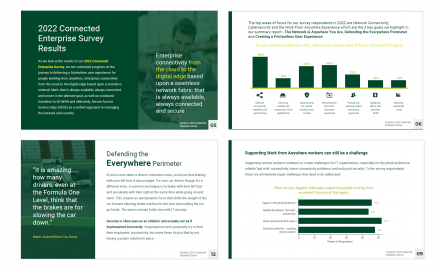Technology and the Workplaces of the Future
Technology and the Workplaces of the Future
When we think about the major trends and impacts of technology, perhaps nowhere are they more evident from my perspective than where we work and spend countless hours of our creative lives.
We often refer to this as the “Workplace of the Future”, but when I visit with customers around the world, what they say to me is, ‘The future is now, not tomorrow’, and they say that because it’s their workforces that are on the cutting edge, evolving how work gets done. And, that’s the big shift.
You see, for decades, it was the other way around – it was the workforce that had to adapt to new applied technology driven primarily by enterprise IT. Today, it’s the enterprise that must adapt to technology much of it driven by the users themselves. And the enterprise must respond quickly and agilely or risk getting left behind in the digital transformation shuffle.
Because of the rapid pace of technological innovation and societal change, the workplace is redefining enterprise technologies, architecture and processes, top to bottom. For example, over the next year or so, it’s expected 50% of the total global workforce will be millennials; 40% of data will be cloud-based; and IoT will connect over 20bn devices.
Gartner and other industry analysts point out the dramatically changing workstyle of people where consumer technologies are being introduced into the enterprise based upon personal preference. Analysts also note that their clients are investing heavily in mobile and virtual technologies because where a person works is no longer a place, but it’s where that person is.
Either an organization transforms the way it connects, communicates and supports the demographics of the new workspace, basing it upon an exceptional end user experience, or it risks being disrupted by competition.
So, what is driving the Workplace of the Future and what is it that organizations are striving to do to support and retain talented workforces that are the key to innovation and productivity?
Let’s start with Collaboration because when we enhance the ability of teams to collaborate wherever they are in the world, we can dramatically increase not only productivity but intellectual creativity.
The next is Customer Experience. This is where we provide our internal users the technology experience they expect… and that’s the same experience they know and expect as retail customers themselves from the perspectives of ease and intuitiveness of consumer technologies.
Next we have what’s known as a One Size Fits One Approach to technology. This is where we can have a dramatic impact on employee satisfaction and productivity because employees can now use the technologies they want versus what enterprise IT provides them.
And, finally, Mobility continues to play a major role in driving the Workplace of the Future because it enables our users to do their jobs anytime, anyplace, with any device.
The Mobile component ties together everything just mentioned, by giving users the ability to be productive on the go with peace of mind that their work product is safe and secure.
A significant amount of new smart technology is increasingly working behind the scenes to support the new Workplace paradigm and it’s beginning to have a major impact not only on productivity but on cost management.
So, let’s talk for a moment about Automated Intelligence.
If you want happy and productive users, you have to keep them connected, and Automated Intelligence is the key to delivering an exceptional, “always available” user experience. For example, at ��ʪ����Ƶ, we utilize Automated Intelligence to replace traditional reactive support models with the latest data-driven, proactive ‘resolutionary’ technologies.
Automated Intelligence has two goals, the first is to eliminate incidents upfront prior to having to get a support person involved. Think of this as “fixing things before they break” or fixing them remotely via automation so a service desk call or field dispatch ticket is avoided.
The second goal is faster resolution when incidents do occur. Sometimes the need for intervention by a support person is unavoidable. If that happens, they must be provided with the ability to resolve the issue quickly to ensure the end user is back up and running faster and keeps them productive.
Automated Intelligence covers a lot of ground, so here are a few examples:
• Automated self-healing is the resolution of issues without the need for human intervention or the use of scheduled maintenance to avoid potential issues in the future
• Predictive support allows remote resolution of multiple underlying issues that could potentially affect an end user in the future
• Automated self-service provides end users with easy access to automated solutions themselves
• Predictive analytics enables support personnel to do deep diagnostics on the health of a device – even retroactively– to quickly determine the best course of action
• Automated resolution provides support personnel with a dashboard to resolve common issues across multiple devices at once with the push of a single button
Automated solutions like these can significantly transform a support organization and will become more prevalent over the next several years. The key though is implementing these technologies across the enterprise to enable our workforces to do their jobs any time and any place, in a more collaborative and productive manner than was ever humanly possible before.
< Back to all Insights

